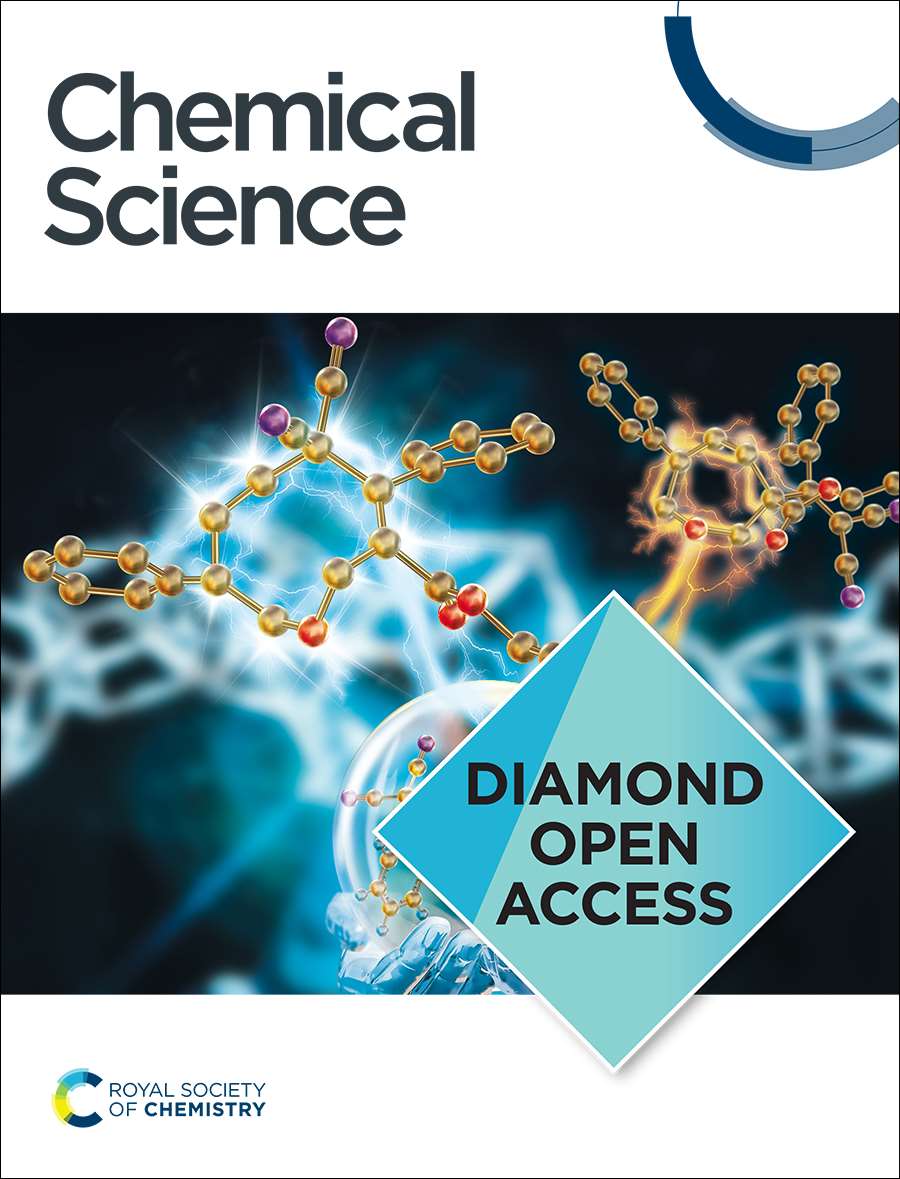Molecular engineering of porphyrin dyes and copper complexes for enhanced dye regeneration toward high-performance dye-sensitized solar cells using copper(I/II) redox shuttles
IF 7.4
1区 化学
Q1 CHEMISTRY, MULTIDISCIPLINARY
引用次数: 0
Abstract
Porphyrin dyes have garnered significant attention as promising photosensitizers for dye-sensitized solar cells (DSSCs) due to their exceptional light-harvesting capabilities and remarkable power conversion efficiencies (PCEs) when paired with cobalt(II/III) complex-based redox shuttles. Meanwhile, copper(I/II) complexes have emerged as new generation redox shuttles, achieving impressive open-circuit voltages (VOC) exceeding 1.0 V. However, porphyrin-based DSSCs using copper(I/II) redox shuttles have struggled with low-to-moderate PCEs, primarily due to insufficient driving forces for the dye regeneration process. In this study, we introduce FL1, a novel porphyrin dye featuring a fluorene moiety with reduced electron-donating properties, designed to ensure a sufficient driving force for dye regeneration using copper(I/II) complexes. Under optimized conditions, DSSC incorporating FL1 with a copper(I/II) complex utilizing 4,4′-dimethoxy-6,6′-dimethyl-2,2′-bipyridine [Cu(2MeOby)2][TFSI]/[Cu(2MeOby)2][TFSI]2 achieved a notable PCE of 8.30% with a VOC of 0.890 V. Furthermore, our investigation into counterion effects revealed that DSSCs employing [Cu(2MeOby)2][PF6]/[Cu(2MeOby)2][PF6]2 as a redox shuttle delivered the highest PCE of 9.06% with a VOC of 0.900 V, attributed to its superior diffusion coefficient. Finally, co-sensitized DSSCs featuring FL1 and XY1B achieved an outstanding PCE of 10.9%, while retaining a high VOC of 0.945 V, setting a new benchmark efficiency for porphyrin-based DSSCs utilizing copper(I/II) redox shuttles. This breakthrough highlights the immense potential of further refining porphyrin dyes and copper(I/II) redox shuttles through energy-level engineering to optimize the driving force for dye regeneration and propel advancements in DSSC technology.

利用铜(I/II)氧化还原梭子增强染料再生的卟啉染料和铜配合物的分子工程
卟啉染料作为染料敏化太阳能电池(DSSCs)的光敏剂,由于其特殊的光捕获能力和与钴(II/III)配合物氧化还原梭体配对时显着的功率转换效率(pce)而引起了极大的关注。与此同时,铜(I/II)配合物已成为新一代氧化还原穿梭体,其开路电压(VOC)超过1.0 V。然而,使用铜(I/II)氧化还原梭子的卟啉基DSSCs在低至中等pce方面存在困难,主要是由于染料再生过程的驱动力不足。在这项研究中,我们引入了FL1,一种新型卟啉染料,具有减少电子给体性质的芴部分,旨在确保使用铜(I/II)配合物再生染料的足够驱动力。在优化条件下,FL1与4,4′-二甲氧基-6,6′-二甲基-2,2′-联吡啶[Cu(2MeOby)2][TFSI]/[Cu(2MeOby)2][TFSI]2铜(I/II)配合物的DSSC的PCE为8.30%,VOC为0.890 V。此外,我们对反向效应的研究表明,采用[Cu(2MeOby)2][PF6]/[Cu(2MeOby)2][PF6]2作为氧化还原穿梭体的DSSCs,由于其优越的扩散系数,其PCE最高为9.06%,VOC为0.900 V。最后,FL1和XY1B共敏DSSCs的PCE达到了10.9%,同时保持了0.945 V的高VOC,为利用铜(I/II)氧化还原梭子的卟啉类DSSCs树立了新的效率基准。这一突破突出了通过能量级工程进一步精炼卟啉染料和铜(I/II)氧化还原穿梭体的巨大潜力,以优化染料再生的驱动力,推动DSSC技术的进步。
本文章由计算机程序翻译,如有差异,请以英文原文为准。
求助全文
约1分钟内获得全文
求助全文
来源期刊

Chemical Science
CHEMISTRY, MULTIDISCIPLINARY-
CiteScore
14.40
自引率
4.80%
发文量
1352
审稿时长
2.1 months
期刊介绍:
Chemical Science is a journal that encompasses various disciplines within the chemical sciences. Its scope includes publishing ground-breaking research with significant implications for its respective field, as well as appealing to a wider audience in related areas. To be considered for publication, articles must showcase innovative and original advances in their field of study and be presented in a manner that is understandable to scientists from diverse backgrounds. However, the journal generally does not publish highly specialized research.
 求助内容:
求助内容: 应助结果提醒方式:
应助结果提醒方式:


